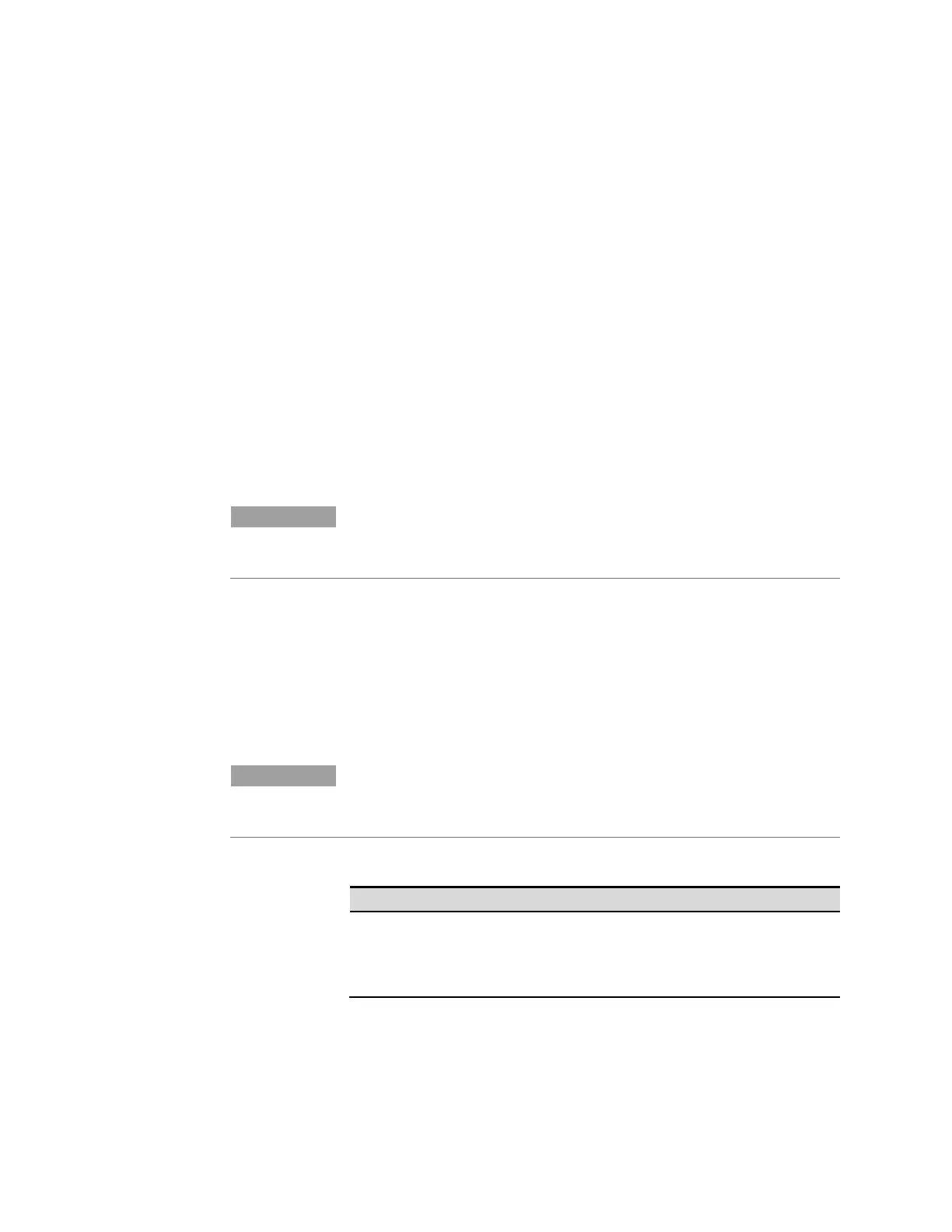Appendix D Grouping/Compatibility
110 Series E4360 User’s Guide
Output Grouping
Almost all instrument functionality is supported by grouped channels,
including voltage and current programming, measurements, status, SAS
and Table modes. The following conditions apply for grouped channels:
When output channels have been grouped, a single programming
command will control both channels. A channel parameter is
optional; as all commands are automatically sent to channel 1. You
cannot send commands to channel 2.
Outputs can only be grouped on individual mainframes.
Output channels that are grouped must also be connected in
parallel as described in chapter 2.
The maximum output current is the sum of the maximum of each
channel in the group.
Connect the Outputs
NOTE
If the output grouping is being used in either direct-parallel mode or
auto-parallel mode, you must connect the outputs together as
described in chapter 2 under “Direct-Parallel” or “Auto-Parallel”
For the firmware to correctly control the grouped channels, it needs to
know whether the outputs are direct- paralleled or auto-paralleled. In
auto-parallel mode, the firmware must know which mainframe contains
the master output channel, and which mainframe has the follower
output channels. This is explained in the next section.
Configure the Groups
NOTE
For the grouping commands to take effect, you must reboot the unit
after completing steps 1 through 3. Either cycle AC power or send the
SYSTem;REBoot command”.
Step 1. Select the output channels you wish to group.
Front Panel:
SCPI Command:
Select System\Groups\Groups.
Check channel 2 in Group 1.
To ungroup the channels, check
channel 2 in Group 2.
To group of channels 1 and 2:
SYST:GRO:DEF (@1,2)
To ungroup channels 1 and 2:
Step 2. Specify whether the grouped outputs in a mainframe are wired in direct-
parallel or auto-parallel.

